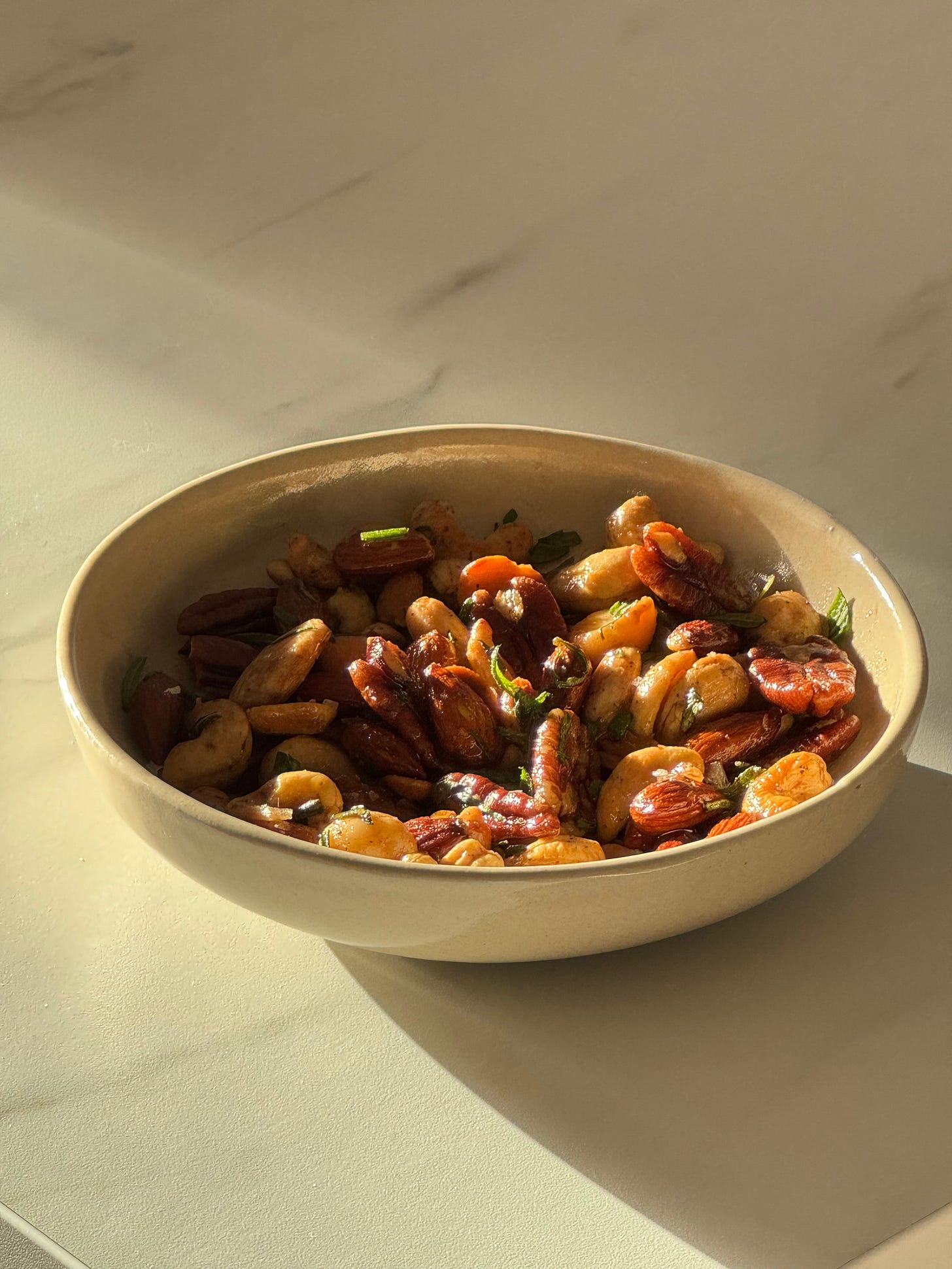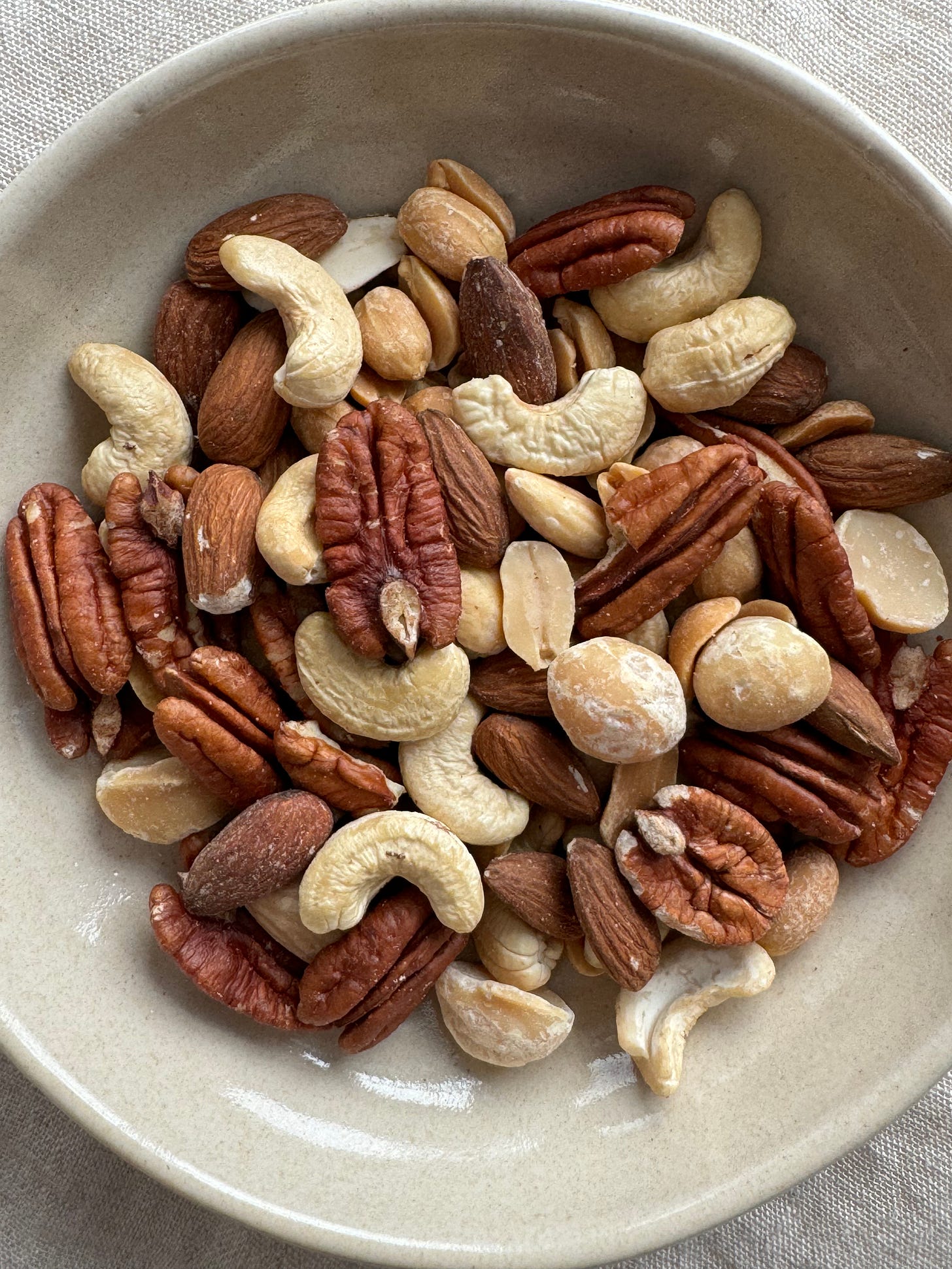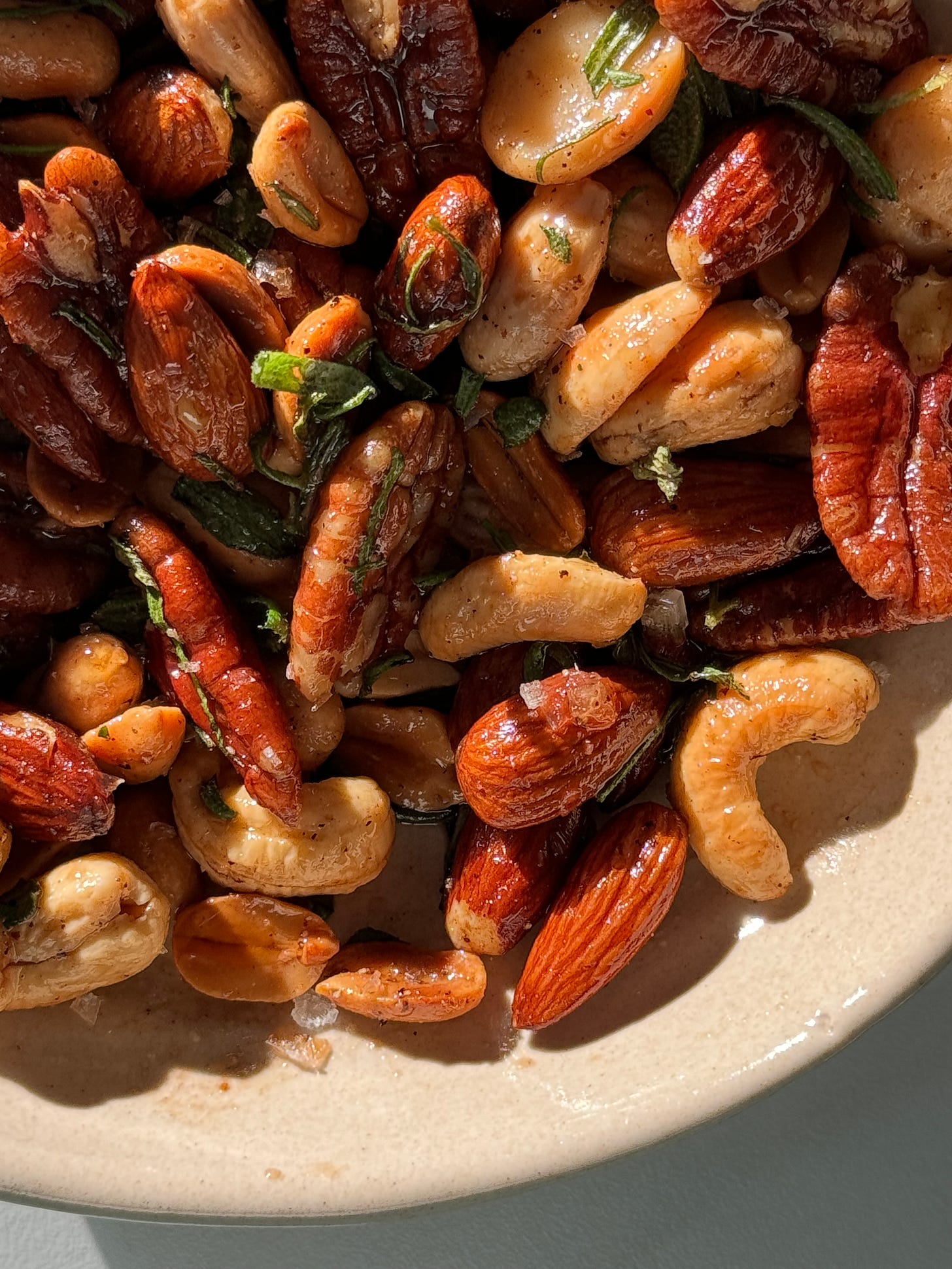Allô! 👋
Hello! Welcome to the seasonal sundays section of the good food at home newsletter. This is a weekly-ish paid supplement that aims to provide simple recipes for those seasonal ingredients that may sometimes elude or confound us in the kitchen. The main newsletter will always be free, but by subscribing to seasonal sundays you will not only be able to access extra recipes + the full archive, you will also help support all the researching, cooking, documenting & writing that goes into sharing this newsletter with you. If you’d like to be a part of a growing community and show you value this work, subscribing is easy and costs less than £2 per week (less than £1/week with an annual subscription or free if you refer some friends, and the first 7 days are always free)! Why not give it a shot? We’d love to have you 💛
Once again, the theme this winter is stored and/or preserved produce. Don’t blame me, that’s just what the season calls for! Peanuts and tree nuts are usually harvested in autumn some time between September and November (or from March to May in the Southern hemisphere), but they are of course enjoyed year-round and often seem just as appropriate in early March as they do in late July.
Still, though it might feel like nuts can live forever in the pantry, depending on the type, they’ll only last about six to nine months before going rancid (sometimes a bit longer, as with almonds, sometimes much less, as with pine nuts). Continuing the topic of pantry and freezer foods, you’ll hopefully be relieved to learn that storing unopened bags of raw nuts in the fridge or freezer can roughly double their shelf life. And, if you didn’t chill or freeze any nuts back in the fall, worry not — any unexpired nuts you have in your pantry now should be just about four-to-six months old and still perfectly suited to this week’s recipe.
Now, you may be wondering, how do I know if my nuts have gone bad? The easiest test is simply to look, smell, and then taste. Rancid nuts usually look and smell fine to the untrained eye and nose (though in rare cases mould should tip you off!), but taste is an easy tell-tale sign for even the most uninitiated among us. If your nuts have become unpleasant to eat, somewhat sharp or sour and bitter in flavour, you’ll know they’ve passed their prime.
•••
As nut allergies have become increasingly common in the last decades, there’s a good chance you might not be able to enjoy or share nuts as freely as you might like. Luckily, there are substitutes. Large seeds like sunflower and pumpkin, crunchy roast pulses like chickpeas or butter beans, and even popped corn (alone or, better yet, all mixed together) can make good replacements that won’t make you feel like you’re missing out. If using in the recipe below, toast the seeds as you would with the nuts — otherwise, pre-roast your pulses and pre-pop your corn and simply toss through at the end of Step 3.
rosemary spiced nuts 🌰🌿
Being Canadian, I can’t help but point out that we are entering prime maple syrup season. Though I frequently long for the sugar shacks of my native Quebec at this time of year, I am thankfully comforted by the small stash of syrups I keep in my pantry. The one I used for these nuts is an admittedly fancy whisky barrel aged maple syrup from Prince Edward Country in Ontario, but any quality maple syrup will do just fine.
•••
INGREDIENTS
Keep reading with a 7-day free trial
Subscribe to good food at home to keep reading this post and get 7 days of free access to the full post archives.







